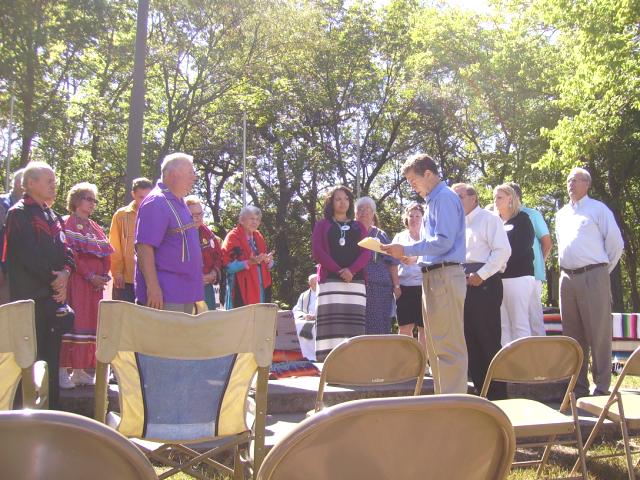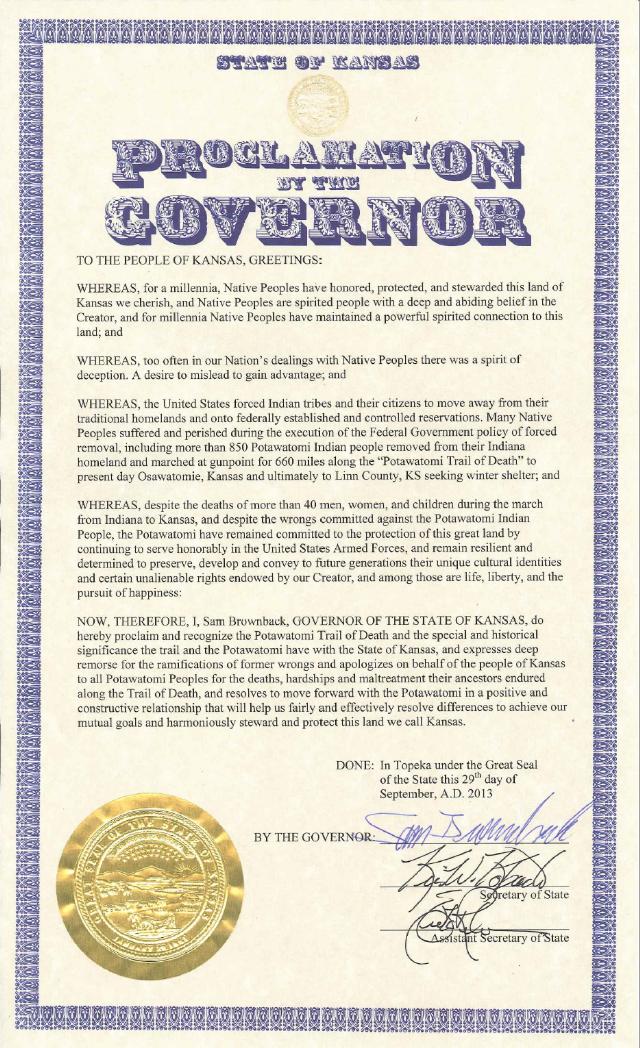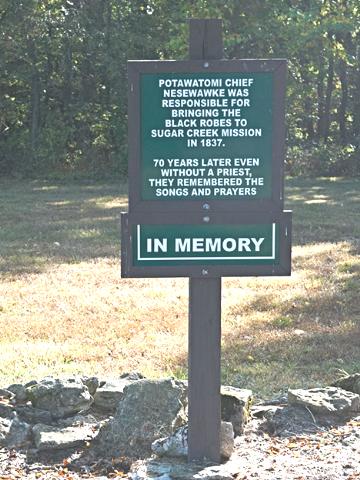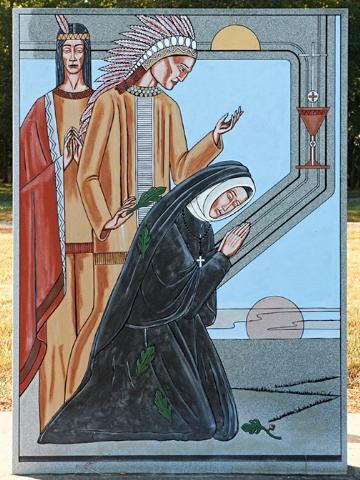|
By Shirley Willard, Fulton County Historian Sept. 29 Sunday - last day of the caravan. The motel we stayed in, Landmark Inn, had closed its breakfast facility a month ago, so we gathered to eat at Whistle Stop Cafe. Oklahoma beat Notre Dame football the night before so the Wamego sisters sang “Oklahoma” to us on the CB radios as we drove. Naturally I had to sing Manchester College song to them because it mentions the Kenopocomoco (Eel) river, “where the Indian raised his wigwam, we have studied there.” The end of our trail was the St. Philippine Duchesne Memorial Park 20 miles south of Osawatomie, where the elderly nun Rose Philippine Duchesne came to be a missionary to the Potawatomi and they gave her the name of She Who Prays Always. She was canonized in 1988, the first female saint west of the Mississippi River. After celebrating Mass, we were surprised when Kansas Governor Sam Brownback read an apology to the Potawatomi for the Trail of Death. He also presented a deer head with a nice set of antlers to Jon Boursaw to take to the Citizen Potawatomi Nation museum at Shawnee, Oklahoma. I talked to Gov. Brownback afterward and said I thought Indiana should apologize to the Indians. He said he knew Indiana Governor Mike Pence and would talk to him. I hope this can come to pass. Several states have apologized to the Native Americans. The Potawatomi were marched at gunpoint down Rochester’s Main Street Sept. 5, 1838. Indiana had many forced removals from 1820 to 1851. Gov. Brownback had a copy of my (our) 2003 book, Potawatomi Trail of Death - 1838 Indiana to Kansas, which he asked me to autograph. This is the 440- page book that reprinted Father Petit’s letters, the 1838 diary, George Winter’s pictures of those on the Trail of Death, John Tipton and William Polke letters, all primary sources for the Trail of Death, plus biographies of several Potawatomi families that had ancestors on the Trail of Death, and much more. I was very tired from the beginning. Well, we had 900 kids Friday at the Trail of Courage for school tour day and my job was to tell them the history of the Trail of Death. Then the Trail of Courage was Saturday and Sunday with thousands of people. So on Monday when we started out, I was already exhausted. So many times on the Trail of Death caravan I would close my eyes and fall into a dream, feeling that Bill Wamego, Tom Hamilton, Susan Campbell and others were following behind us, like in the past. I shared on the CB radio my memories of the past caravans 1988, 1993, 1998, 2003 and 2008, and the times between when we went to dedicate historical markers. The other caravan participants said I should write a book and call it “Twenty-five Years on the Trail of Death.” Maybe I will when I get rested up.  Kansas Governor Sam Brownback reads his apology to the Potawatomi. From left: Jerry Pearl, Carmelita Wamego Skeeter and grandson Chris Osborn, Janet Pearl, Sister Ginger Pearl, Amy Guerich, Theresa McNary. In front: Jon Boursaw, Citizen Potawatomi Nation, Kansas representative. To the right are members of Governor staff and friends. (Photo: Shirley Willard)
Kansas Governor Sam Brownback reads his apology to the Potawatomi. From left: Jerry Pearl, Carmelita Wamego Skeeter and grandson Chris Osborn, Janet Pearl, Sister Ginger Pearl, Amy Guerich, Theresa McNary. In front: Jon Boursaw, Citizen Potawatomi Nation, Kansas representative. To the right are members of Governor staff and friends. (Photo: Shirley Willard)
 This is the apology that Kansas Governor Sam Brownback issued to the Potawatomi at the end of the Trail of Death Commemorative Caravan Sept. 29, 2013.
This is the apology that Kansas Governor Sam Brownback issued to the Potawatomi at the end of the Trail of Death Commemorative Caravan Sept. 29, 2013.
|
| < Previous | Home | Next > |

